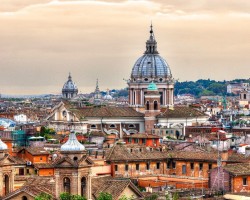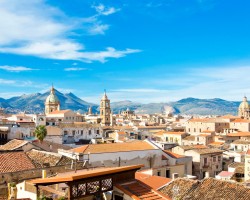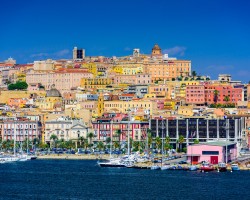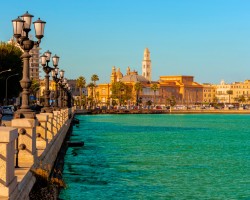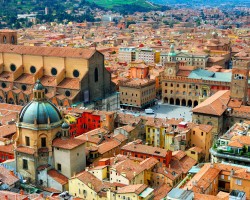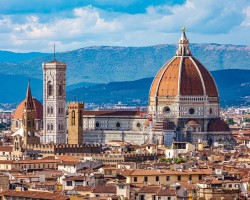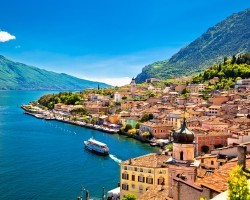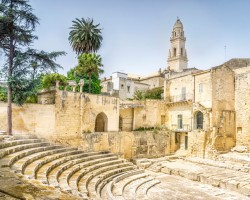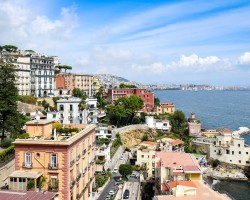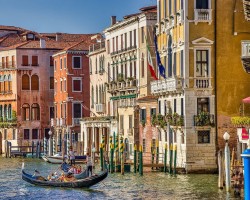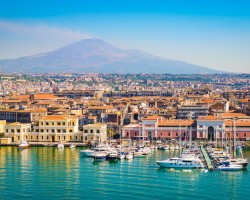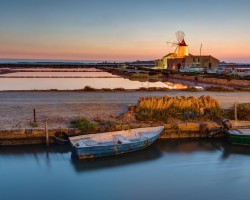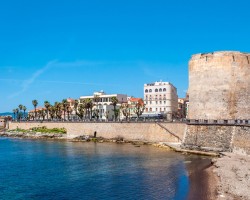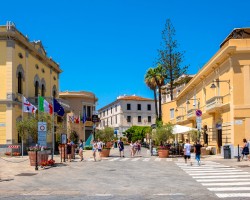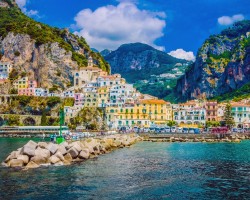Best time to go to Italy for a perfect weather and where to go?
When is the best time to go to Italy?
Italy is one of the countries that has a lot to offer to its visitors: beaches, discoveries, magnificent landscapes, or a relaxing stay. From a weather point of view, the best time to go to Italy extends from April to November, but it is entirely possible to go there all year round.
The choice of your holiday dates will mainly depend on what you want to do on the spot and the regions you want to explore:
- To visit historical sites or discover the beauty of Italian cities, prefer spring, from April to June, or autumn, from September to November.
- For a beach stay on the coast or on the islands, the summer season is ideal. The Mediterranean water displays heavenly averages and the sun is always shining.
- For hiking, it is better to go in the shoulder seasons, to be able to walk without suffering from the heat. In spring, the landscapes are covered with multicolored flowers, but the weather can be humid, while in autumn the weather is drier, but the hills are less green.
- For skiing and other winter sports, head to the north of the country between December and April.
When to go to Italy to avoid crowds? Attracting travelers from all over the world, the country is very busy from April to October, with a peak between July and September. Prices are then at their highest, whether for flights or accommodations on site. If you like tranquility, the best compromise is to go in November: the weather is still nice and warm and it is the least expensive period. In the far south, like in Brindisi or Bari in Puglia, or in Sicily, the month of March can also be a good option, even if showers are to be expected. In winter, the weather remains mild and it is entirely possible to go on a city trip to Rome, Venice, or Florence.
This text has been automatically translated.
Where and when to go based on the weather?
Central of Italy
Rome, Pescara, Perugia...
North West of Italy
Milan, Turin, Genoa...
Northeast of Italy
Venice, Lake Garda (Lago di Garda), Bologna...
Sardinia
Cagliari, Olbia, Alghero...
Sicily
Palermo, Catane, Marsala...
South of Italy
Naples, Bari, Lecce...
Tuscany
Florence, Pisa, Siena...
To get all the information about the climate and weather in Italy for a specific month, click on the corresponding link below:
Italy in january Italy in february Italy in march Italy in april Italy in may Italy in june Italy in july Italy in august Italy in september Italy in october Italy in november Italy in december
Best time to travel to Italy by cities
Climate and Weather in Italy
Italy, which is located at the crossroads of France, Switzerland, and Austria, is characterized by its long shape. Due to its geography and topography, Italy's climate is very diverse. Here are the main variations:
- The majority of Italy has a warm Mediterranean climate, covering 60% of the country. This climate can be found, for example, in the region of Rome, Pisa, Naples, Capri, Calabria, Sardinia, and Sicily. In Genoa, this climate offers milder summers.
- A temperate oceanic climate is mainly found in the northern part of Italy: in Florence, Turin, Perugia, and around Lake Garda.
- A humid subtropical climate without a dry season and warm temperatures prevails in Venice, Milan, and in some parts of Tuscany, such as Siena.
- In the Italian Alps, three types of climates can be found: tundra polar climate in the Dolomites, humid continental climate in South Tyrol, and subarctic climate on the peaks of the Aosta Valley.
In general, the weather in Italy is characterized by large temperature variations between the north and the south. Moreover, above the Po Valley, it rains twice as much as below. The west coast is wetter than the east coast, which is more sheltered. On the other hand, the Adriatic coast often experiences lower temperatures during the winter season due to its exposure to cold winds from the northeast.

Climate of Northern Italy
- In northern Italy, especially in the Alps, winters are harsh. Between December and February, temperatures are often below freezing at night, and reach around 10°C during the day. In mountainous areas, snow can be present until April.
- In spring, the weather warms up quickly. While nights are still cold in March, the average daytime temperature is around 15°C. In April and May, expect temperatures between 19 and 24°C.
- From June onwards, summer sets in and it gets hot, especially in the northeast. For example, the average temperature in August in Bologna is 33°C. Even at high altitudes, the thermometer is mostly above 20°C. In the northwest, temperatures are 1 to 2 degrees lower. The season extends until late September, with temperatures still around 26°C.
- Autumn is in full swing in October and November. Temperatures drop at night, but you can still enjoy beautiful sunny days with averages between 15 and 21°C.
- This is the rainiest region in the country: rain is present throughout the year, with a peak in humidity between May and August.
Climate of Central Italy and Tuscany
- From April to November, the weather is perfect in central Italy.
- In late spring and early autumn, temperatures range from 18 to 23°C, perfect for strolling and exploring the treasures of this region, despite occasional showers.
- In summer, from June to September, temperatures range from 28 to 33°C. It's hot, but not scorching.
- In winter, from December to March, temperatures remain mild, around 8°C at night and 14°C during the day.
- In Central Italy and Tuscany, it's very pleasant to swim between June and September, and sometimes even in October depending on the year. In July and August, the water temperature is around 25°C.
- Precipitation can occur throughout the year, with a peak in humidity in May and November.
Climate of Southern Italy and the Islands
Heat and sunshine are on the agenda in southern Italy, as well as on the islands like Sicily or Sardinia. Due to its latitude, this part of Italy experiences long summers. On the mainland, the heat can be uncomfortable for those sensitive to it. The average temperature is 34°C in July and August in places like Lecce and Taranto, and temperatures can rise even higher if you move away from the coast. The only solution to cool off is to swim! The water is around 26-28°C throughout the summer season, a real pleasure... In Sardinia and Sicily, temperatures are moderated by sea breezes.
Spring and autumn are so short that they are almost non-existent. It's only in April and November that the weather reminds us of the transitional seasons with maximum temperatures around 20°C.
Between December and March, temperatures range from 14 to 17°C at the warmest part of the day. The weather can be rainy, but the clouds quickly give way to sunshine.
This text has been automatically translated.
Temperatures and rainfall in Italy
On these 3 graphs, we present the evolution of temperatures of Italy and month-by-month rainfall for the cities of Rome, Palermo, Cagliari, Bari and Bologna, as well as the month-by-month sea temperature for coastal cities.
Peak visitor numbers and tourist seasons in Italy
Find out when Italy has its high tourist season (the period when the influx of tourists is highest) and off-peak tourist season using our data and figures.
Tourist seasons in Italy
The months with low numbers of tourists are: January, February, March, November and December. The number of visitors to Italy is high in: April, May, June, July, August, September and October.
- Very low season in Italy: January, February and March.
- Low season in Italy: November and December.
- High season in Italy: April, May and June.
- Peak season in Italy: July, August, September and October.
Figure: Visitor index for Italy month by month
Average price for flights to Italy
A return flight between New York City and Rome is generally cheaper if you go in october ($ 615 on average): this is the best time for travellers on a tight budget. In contrast, you may end up paying $ 354 more for your airline ticket to Rome if you go in july.
Where to go in Italy?
This table allows you to see the maximum temperature for each city and our opinion on the weather month by month (see colour legend below the table).
| Cities | jan. | feb. | mar. | apr. | may | jun. | jul. | aug. | sep. | oct. | nov. | dec. |
| Rome | 56°F | 56°F | 61°F | 67°F | 74°F | 83°F | 88°F | 90°F | 83°F | 74°F | 65°F | 58°F |
| Palermo | 58°F | 58°F | 61°F | 67°F | 72°F | 81°F | 88°F | 88°F | 81°F | 74°F | 67°F | 59°F |
| Cagliari | 58°F | 58°F | 61°F | 67°F | 72°F | 81°F | 88°F | 88°F | 81°F | 74°F | 67°F | 61°F |
| Bari | 56°F | 56°F | 59°F | 67°F | 74°F | 81°F | 86°F | 88°F | 81°F | 72°F | 65°F | 58°F |
| Bologna | 47°F | 50°F | 59°F | 67°F | 74°F | 85°F | 90°F | 92°F | 81°F | 70°F | 59°F | 50°F |
| Florence | 50°F | 52°F | 59°F | 67°F | 72°F | 81°F | 88°F | 90°F | 81°F | 70°F | 59°F | 52°F |
| Lake Garda (Lago di Garda) | 47°F | 49°F | 58°F | 63°F | 70°F | 79°F | 83°F | 83°F | 76°F | 67°F | 56°F | 49°F |
| Lecce | 58°F | 59°F | 61°F | 67°F | 74°F | 81°F | 86°F | 90°F | 83°F | 74°F | 68°F | 61°F |
| Milan | 47°F | 50°F | 59°F | 67°F | 74°F | 83°F | 88°F | 88°F | 79°F | 68°F | 56°F | 49°F |
| Naples | 56°F | 58°F | 61°F | 67°F | 74°F | 81°F | 88°F | 90°F | 83°F | 74°F | 67°F | 59°F |
| Venice | 47°F | 50°F | 58°F | 65°F | 70°F | 79°F | 83°F | 85°F | 77°F | 67°F | 58°F | 49°F |
| Catane | 59°F | 61°F | 65°F | 70°F | 77°F | 86°F | 94°F | 94°F | 85°F | 77°F | 68°F | 63°F |
| Marsala | 59°F | 58°F | 59°F | 63°F | 68°F | 76°F | 81°F | 83°F | 79°F | 74°F | 68°F | 61°F |
| Alghero | 56°F | 56°F | 59°F | 63°F | 68°F | 77°F | 83°F | 83°F | 79°F | 72°F | 65°F | 59°F |
| Olbia | 58°F | 58°F | 61°F | 67°F | 74°F | 83°F | 88°F | 88°F | 81°F | 74°F | 65°F | 59°F |
| Amalfi | 56°F | 56°F | 61°F | 67°F | 72°F | 81°F | 88°F | 90°F | 81°F | 74°F | 65°F | 58°F |
| Amalfi Coast | 58°F | 58°F | 59°F | 65°F | 70°F | 77°F | 85°F | 85°F | 79°F | 74°F | 67°F | 59°F |
| Brindisi | 56°F | 58°F | 61°F | 65°F | 72°F | 81°F | 86°F | 88°F | 81°F | 72°F | 67°F | 59°F |
| Calabria | 50°F | 52°F | 56°F | 63°F | 70°F | 77°F | 85°F | 86°F | 77°F | 68°F | 61°F | 54°F |
| Capri | 58°F | 58°F | 59°F | 63°F | 68°F | 77°F | 83°F | 85°F | 79°F | 74°F | 67°F | 61°F |
Legend:
perfect weather
good weather
tolerable weather
bad weather
very bad weather
About Italy
What can I do in Italy?
Beaches / swimming
Nature and countryside
Culture and heritage
Sports
Family travel
Crafts / shopping
Gastronomy
Nightlife
Is this weather information for Italy reliable?
Climate data for Italy has been gathered every day since January 2009. The analysis of these meteorological data for Italy allows us to determine the average for each month in Rome, Palermo, Cagliari, Bari, Bologna, Florence, Lake Garda (Lago di Garda), Lecce, and 207 other cities.
So yes: this data is reliable except in cases of temporary climate disruption in the region.

